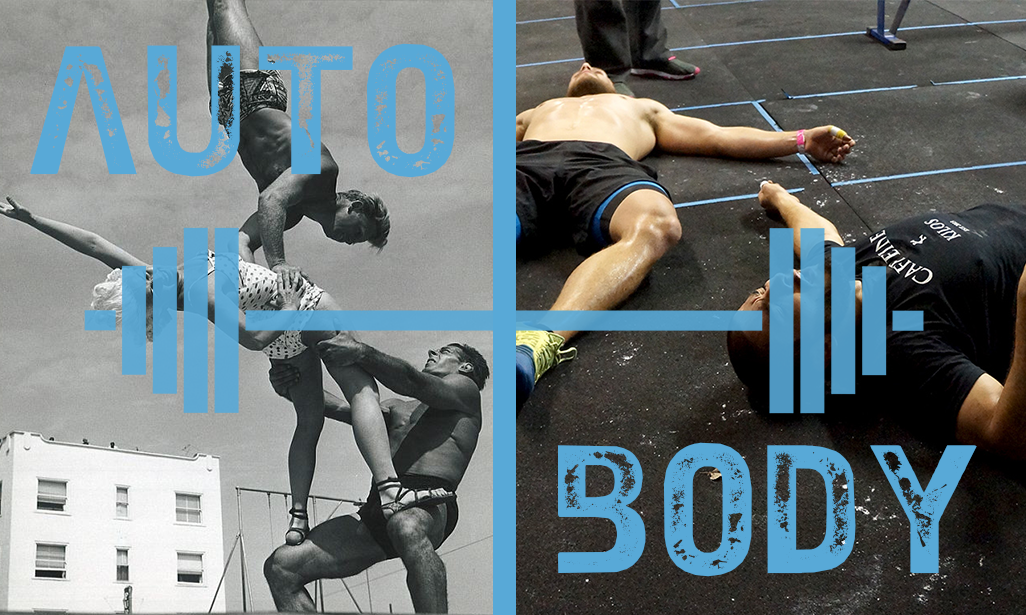
A new banner has been strung across the brick wall of an old building at the southeast edge of Tacoma’s hilltop district. It shows the back of a woman on a stationary rower, her muscles flexed at the end of her stroke. Next to this is a ghost sign, painted sometime last century across the brick wall in difficult-to-remove lead paint: “Auto Clearing House,” it says, presumably indicating a long-lost autoparts shop from the era before the Autozone apocalypse. The juxtaposition of the two makes the stationary rower seem like some sort of dismantled piece of industrial equipment, gears converted into resistance mechanisms with attached pulleys. If searched on Google, the phrase “auto clearing house” today only shows results for a financial trading network of the same name—an automated clearing house that allows for financial transactions to be stored and processed at the end of the day so that processing only has to happen once, allowing more transactions to take place in a shorter period of time. Smart-looking, well-dressed people file into the building under the new banner or into nearby faux-brick condos, designed to mimic the “historical” quality of the neighborhood.
In the time stretched between the Auto Clearing House and the condos, newly “historic” Hilltop had been one of many low-scale warzones that emerged in the wake of deindustrialization. This was inaugurated by the Mother’s Day riots in 1969, sparked when Tacoma police attempted an arrest in the predominantly black neighborhood, causing a crowd to gather to free the arrestee. The crowd grew, property destruction followed and a police officer was shot. The event spawned a moderate black leadership capable of containing the more radical energies of the neighborhood while simultaneously ensuring that for the next twenty or so years it would effectively be cordoned off from whatever post-industrial development might take shape in a city still reeling from mass factory closures. As in many such neighborhoods in American cities, the only economic growth that did arrive came in the form of the black market. For years the area was known mostly as the territory of the Hilltop Crips, and its signature event was a 1989 Ash Street shootout between a group of Crips and off-duty Army Rangers-turned-neighborhood vigilantes. But Crips give way to Capital, and in recent years the deindustrialized blue collar neighborhood has become one of many new, hip historic districts in a city attempting to ride the boom in neighboring hi-tech hubs like Seattle and Bellevue.
Despite these economic shifts, a warehouse remains and within it a Crossfit gym. From outside it seems as if little has changed from that industrial era. Bodies of all types enter as early as 5:30AM. The crowd is largely made up of 24-34 year olds, mostly white although not entirely. The bodies come in all shapes and sizes, but like the auto parts that came before them, they become conditioned by use. Quadriceps will soon begin to show above the kneecap, along with the trapezius of the upper back and neck that are displayed in the banner above the entrance. Calluses at the base of the fingers from squeezing a pull-up bar, scars that run vertically up and down the shins from a barbell as it’s pulled off the ground in a deadlift. One generally shared goal of these bodies is to reinvent their present state. Whether they’ve been through too much stress, or too little, these bodies have flocked here, at 5:30AM to be produced and consumed by exercise. Under the watchful eye of the clock they labor, sweat, use tools, and then leave. What used to be a warehouse for miscellaneous auto parts sold into the final marketplace before the junkyard has now become a warehouse for miscellaneous, leftover bodies. Intensifications of the division of labor under capitalism demand a reciprocal division of bodies, so what do we do with them? What are bodies for?
Iron
In 1934 Muscle Beach was opened as a city park in Santa Monica, California under the Public Works Administration of the New Deal. What started as just another public park in line with progressive ideals would soon gain a strong following of war veterans and fitness enthusiasts. For these Muscle Beach regulars, physical culture was about more than just lifting weights. Calisthenics and gymnastics were practiced regularly but, without a widely-accepted orthodoxy, the origins of many of the physical movements themselves were haphazard. Gymnastics exercises were often adopted from the showmen and strongmen of the circus. The Calisthenics were drawn largely from military basic training, as many of those in the Muscle Beach crowd had fought in one of the World Wars. Trapeze work, back flips, lifting and throwing other people, all of these variations were as much demonstration as training. There was no program or specific workout routine to follow, and much of the community was built around learning how to do certain moves and how to build a good routine. As many as ten thousand people would come down to the pier to watch the athletes perform. Muscle Beach turned the sleepy retirement town of Santa Monica into the center of the 20th century fitness world.
This community was largely made possible by the free availability of the park, as well as the stipends given out to military personnel returning from war. Steve Reeves, the actor and bodybuilder best known for his role in Hercules and the sequel, Hercules Unchained, was a regular at Muscle Beach after leaving the military. He lived off the 52/20, which stood for $20 for 52 weeks that the government provided, and shared a room in what was known as Joy’s muscle house by the sea. Fleurette Crettaz, known as Joy, was a bodybuilding fan that ran a communal house in Santa Monica where gymnasts and weightlifters could live. She did all of the cooking, cleaning and shopping, charging $100 a month per room, so the athletes could dedicate all their energy to training.[1]
But as the era shifted from wartime public works to budding urban crisis this very success was transformed into a sort of latent threat. The massing-together of bodies—specifically working class bodies—had turned a public health institution into a site of perceived moral and social decay. Different accounts as to what exactly happened range from “anti-social behavior,” to charges of bodybuilders partying with underage girls. In 1959, the city of Santa Monica decided to shut down Muscle Beach, with a judge determining the park endorsed, ‘freakish’, ‘homoerotic’, and ‘unbalanced’ activity.[2]
Though couched in the conservative terms of the 1950s the condemnation of the park also hints at a deeper fear of so many war-scarred, disciplined proletarian bodies brought together in a carnivalesque atmosphere. The carnival as one of the origin-points of Muscle Beach is telling, with its history as a symbol of semi-permitted transgression that inverts traditional power relations. In a strange twist of history, America’s weightlifting legacy thereby shares at least part of its genesis with May Day, the raucous, riotous communist holiday.
The threat was clear. Shortly after the hearing, the city raided Muscle Beach in the middle of the night, bulldozing the gymnastics structures and taking the weight equipment. With its home destroyed, the fitness scene divided down a few different paths. Some defied the city and continued to perform and work out on Muscle Beach, others moved to a new location in Venice Beach that had opened up a few years earlier, and yet another group of athletes decided to move indoors. Joe Gold, along with Vic Tanny and Jack Lalanne, were some of the first Muscle Beach lifters to open indoor gyms for bodybuilding, powerlifting, and Olympic weightlifting, with the famous Gold’s Gym opening in 1965.
Once Muscle Beach had to be moved indoors, the space limitations and private location changed the nature of the fitness community. Coinciding with the rise of professional bodybuilding, the demonstration of skill and ability shifted toward organized competitions, such as powerlifting and weightlifting, as opposed to the more communal, entertainment-inspired acrobatic routines. Moving indoors also initially reduced the occurrence of men and women training together—doubtless one of many sources for the claims that Muscle Beach had been “anti-social” and “unbalanced.” While most of the Muscle Beach enthusiasts were men, women also participated in the weightlifting and gymnastics performances. This relation was by no means equal, with men commonly having women be the ‘props’ or assistants that would be lifted and thrown around, but this degree of interaction between men and women in a fitness setting would not be seen again until the rise of female bodybuilding and health spas in the ‘80s.
The brick box replaced the beach. Above the door to the tall building, the words “Gold’s Gym” are painted directly on the brick. The original has been repainted and preserved as a historical landmark for Venice Beach, the ghost sign of another bygone era resurrected in the name of urban revitalization. Today, the building is clean, its repainted golden sign spotless. But during its heyday, the gym was dirty, dark, and filled with large, muscular bodybuilders, scenes of which can be seen in the film Pumping Iron, starring Arnold Schwarzenegger. The ground floor was reserved for the weights, with a second story loft that had a bathroom and showers. While Gold’s Gym was a formal business technically open to anyone, it operated more like a private club for the best bodybuilders in Venice Beach. The front door was kept locked at all times to dissuade newcomers, the regulars knew to go around back. Clothing was fairly minimal at Gold’s and it was not uncommon to see people training in nothing but short shorts or a bathing suit. As the fitness industry had yet to be commercialized on a large scale, most of the equipment was made by Joe Gold himself. Dumbbells and barbells were common currency, along with various types of benches and weight-bearing pulley machines. There was nothing to plug in, except perhaps a fan. Similar to Muscle Beach, there was no single workout routine that all the bodybuilders followed. They learned from each other and developed individual training programs that matched their needs and lifestyle. Lifters like Arnold were sponsored so they could train twice a day, but most of the lifters had day jobs and adjusted their training accordingly.
Anabolic steroids, particularly Dianabol, were becoming more commercially available in the mid ‘60s, making bodybuilders bigger, stronger, and leaner, with gyms such as Gold’s acting as their informal marketplace. Better training methods and better drugs created bodybuilders that looked drastically different than someone who exercised and lifted weights without steroid use, leading many people to see them as brutes or monsters. Public shaming was common, which helped to intensify the anti-social stereotype that plagued Muscle Beach. Iron gyms such as Gold’s had helped create a strong bodybuilding community in the United States, but it wasn’t successful at attracting a broader demographic. Most of the gym owners were weightlifters and bodybuilders themselves, without the desire to turn their gyms into business ventures. With membership priced at $60 a year, Gold’s gym wasn’t making enough money, and five years later Joe sold his gym for $50,000 and joined the merchant marine. There was little public awareness about the health benefits of exercise and most of what was being recommended was aerobic exercise that focused on conditioning the cardiovascular system such as running and walking.
The fitness and gym industry eventually grew in the same way that many other industries did: securing investment capital, franchising, and globalizing. The first Gold’s Gym franchise (under new ownership) was created in San Francisco in 1980, and today has over 3 million total members in 22 countries. With a franchise, businesses have strict quality control, and attempt to recreate the same consumer experience in multiple locations. Along with renting out the right to use the company name, each franchise is inspected to make sure it’s keeping up with prescribed best business practices and that its operational infrastructure is up to date. The franchise model was popularized in the early postwar era by companies like McDonald’s, which were able to apply technology in a standard and replicable way that reflected the Fordist assembly line. In the fitness industry Gold’s Gym has become an archetypal franchise, the McDonalds of fitness.
Machine
One of the catalysts for the development of the fitness industry was a salesman named Arthur Jones. Born in the midst of the Great Depression, Jones was an eccentric inventor, pilot, and exotic animal enthusiast who spent a large chunk of his life hunting and trading game in South Africa. If Gold’s Gym is the McDonalds of fitness, Arthur Jones is its Henry Ford. It was in South Africa that Jones started experimenting with different models for what he called the “Nautilus” machine. He was known to be quite protective of his work, and was said to have bulldozed all of his original Nautilus prototypes in his backyard for fear of people stealing his idea. These machines resembled the common weight machines found in gyms today, each with a slightly different design depending on the targeted muscle group. Each machine had a stack of weights connected to a pulley system that would raise the weights as the machine was used. Early weight machines (as seen in the above photo of Gold’s Gym in 1965) used circular pulley and cam devices that looked similar to the pulley system used to pull a bucket out of a well. Jones’ innovation was to replace to circular cam device with one shaped like a nautilus shell. Unlike a circular cam device that keep resistance constant, the uneven shape of the nautilus cam distributed weight unequally throughout the range of motion performed by the user.
Jones claimed that his special nautilus cam was more efficient than any free weight or pulley machine because it was the only device that could vary the amount of resistance at different stages of the movement:
First, Nautilus takes advantage of the way bodies work. Since limbs rotate in circular motions around joints each machine’s pulling, pushing or lifting bar rotates, via a metal arm, around a central pivot […] Second, Jones didn’t use an ordinary pulley to transfer force from the machine’s hanging weights to the resisting bar. He invented a kidney-shaped pulley similar in design to a nautilus shellfish. As the pulley rotates its effective radius changes with the angle of the “kidney,” varying the resistance exerted. Muscles work hardest when leverage is optimum; they work least hard when it’s not. The result: Muscle tension is constant without the sudden jerks that characterise ordinary weight training.
For Jones, the goal of his invention was to create a “thinking person’s barbell.” He thought the barbell by itself was useful, but could be developed further to incorporate the anatomical levers of the human body. The question of optimal health and fitness was boiled down to technological invention and efficiency. Jones was able to market his product as the least dangerous and most scientific, which attracted a new clientele that had previously associated resistance training with dirty gyms and criminals.
These self-explanatory machines provided new gym users with the ability to correctly operate the machine without prior knowledge, thus reducing the need for a community of gym members to explain how to use the equipment and what routine to follow. Jones wrote “scientific” exercise routines that exclusively used Nautilus equipment and published them in popular fitness magazines such as Muscular Development. Each machine was fashioned with a laminated, instructional placard that not only guided the user through the exercise, but also explained which muscles were being worked. While the iron gym of the ‘60s had been a social center for discussing the effectiveness of multiple training methods and exercises,[3] Jones’ Nautilus machines not only removed the need for community, but also explicitly tied the exercise routine to the company that made the machine.
As management techniques developed in the 1970’s and public awareness of the benefits of habitual exercise increased, health and fitness became economically rationalized as valuable for companies. With more American workers moving away from physically demanding jobs and into cubicles, workplace health issues began to include sedentary lifestyle ailments such as obesity, type 2 Diabetes, and cardiovascular disease. With the publishing of more scientific data touting the health benefits of regular exercise, employers began to see exercise as a preventative health measure that had the potential to reduce employee healthcare costs and increase productivity. Fortune magazine estimated in 1975 that the lack of employee exercise was costing firms $700 million annually, and that exercise could help increase productivity and reduce absenteeism.[4] Companies began to either subsidize gym memberships for their employees or build gyms in their office. The new Nautilus exercise machines introduced by Arthur Jones made this incorporation with employers possible by reducing the social stigma of gyms, and providing straightforward instructions on how his product was used.
Fifteen years after the first Nautilus machine was sold, there were over 3,000 Nautilus fitness centers across the country with many more gyms, schools, and sports teams purchasing their own machines. Jones’ Nautilus machines also helped the fitness industry grow as a whole. Between 1972 and 1978, membership in health & fitness clubs grew from 1.7 million to 13 million in the United States, with club sales jumping from $227 million in 1972 to almost $8 billion in 1997.[5] With the success of the Nautilus machines in the ‘70s, Jones moved to Florida and settled on a ranch with one of the largest private collections of exotic animals in the United States. An avid pilot, Jones also had his own private airport on his ranch, now known as the Jumbolair Airport. Later in life he would spend his money hosting medical and exercise science seminars, personally flying in doctors and scientists from around the world with his fleet of 707 airplanes. Married six times, Jones’ motto was “younger women, faster planes, and bigger crocodiles.”
In 1911, Frederick W. Taylor wrote The Principles of Scientific Management as a way to increase the productivity of industrial workers and ameliorate relations between bosses and laborers. His goal was not only to find the most scientifically efficient ways for workers to operate machinery, but also how to better monitor workers in order to keep them from what was called “soldiering”, or purposefully working at a low capacity. One of his stated goals was “To try to convince the reader that the remedy for this inefficiency lies in systematic management, rather than in searching for some unusual or extraordinary man.”[6] Taylor advocated for the hiring of shop floor managers to monitor and teach workers the most efficient production techniques, instead of having workers rely on other workers to teach them their job. The idea behind the Nautilus exercise machine was fairly similar. No longer would exercise routines be learned through doing on the gym floor, but rather they would be prescribed. The scientific rationality was inviting to the novice gym user and it helped dispel the myth that those who went to the gym did so because they were already strong. The machines helped remove the human element from exercise and added a perceived predictability in outcome, which was great for companies trying to calculate how much the investment in a gym would save them in overhead costs.
With the introduction of new technologies, the gym began to take on a different role in social life. Iron gyms such as the original Gold’s Gym continued to exist, but they were no longer in the public spotlight. Corporate fitness was taking over, and this changed the look of the gym, and its patrons. In 1980, 10 years after Joe Gold sold his gym, it had begun to franchise and transform into something drastically different from the Venice Beach original. Instead of being housed in a small, urban, retail space, Gold’s Gyms have become huge, suburban, multi-functioning fitness centers with different rooms for cardio, weights, and exercise classes. The lighting is bright, the equipment is organized and clean, and some even have pools, spas, and juice bars. The subsumption of fitness into work, exercise machines, and the rise in popularity of aerobics, opened up the gym to more than just bodybuilders. The image of the hulking brute was replaced with a more “normal” image of someone wanting to add more muscular tone, lose weight, or improve their mood.
Crossfit
During Silicon Valley’s first dot-com boom in the ‘90s, a man named Greg Glassman was developing the training methodology of Crossfit in his garage in Santa Cruz, California. Glassman redefined what fitness meant, moving it beyond one’s physical appearance or sports proficiency and into the realm of “increased work capacity across broad time and modal domains”. Being fit no longer meant just jogging to stay in shape, but instead being proficient at a wide array of tasks such as rope climbing, gymnastics, Olympic weightlifting, and calisthenics–a diversity of exercise backgrounds ironically similar to those found on the beaches of Santa Monica fifty years prior. As stated on the Crossfit website: “We have sought to build a program that will best prepare trainees for any physical contingency — not only for the unknown, but for the unknowable.” In Crossfit, workouts are changed on a daily basis, known as the WOD (workout of the day), and are taught by a Crossfit coach in class form. Due to the high intensity of each WOD, anaerobic and aerobic energy systems can be taxed in a short amount of time. Each workout is scaled by intensity level so that each participant can do the workout at an appropriate level of difficulty.
Perhaps the biggest difference between the Crossfit gym, known as a “box”, and a big commercial gym is the lack of weight machines. No more Nautilus machines to isolate muscle groups, no more self-instruction. Crossfit prides itself in basing its fitness philosophy around full-body movements that require minimal equipment. These movements are billed as more natural than machines, providing a more comprehensive way to induce muscular fatigue. Along with a turn to more traditional barbell movements, Crossfit has also adopted the Paleolithic diet trend as its go-to for nutritional advice. The diet consists of large quantities of meat and vegetables with moderate fruit intake and very little processed foods. Supposedly modeled after our primal hunter gatherer ancestors, this diet is the second wave of high fat, low carbohydrate diets to hit the fitness industry.[7]
In many cases, there is no open gym, and the facility can only be used during class time with a coach present. The control of the gym experience is invaluable for Crossfit, because it takes the decision making out of the hands of the user, increasing efficiency and productivity in the gym. The varied exercise choice creates a standard of complexity that seems to demand a coach. Crossfit boxes share a similar aesthetic: open space, bare-bones industrialism, chalk, metal, sweat, and pristine, renovated bathrooms. Composite black mats cover the floor, giving each Crossfit box a familiar smell of rubber. Hung upon the walls are dry erase boards listing the WOD, sometimes with a section reserved for each member’s personal records. Bright red digital clocks blare out the start of the WOD as people begin to frantically pick up barbells and swing around on pull-up bars. The coach patrols the gym floor, with shouts of encouragement interspersed with cues and form tips to help the participants better execute the movements. The workouts themselves are relatively short and intense, some only 15 minutes long. After the WOD, time may be spent working on stretching and mobility exercises that aid in injury prevention and fixing bad postural habits. Selfies and instagram pictures are taken, deliberately showing off a new pair of minimalist Reebok shoes designed specifically for Crossfit, or flyknit Nikes, hashtagging allegiance to #crossfit #fitfam.[8]
Greg Glassman is the same mix of professional and wingnut as most corporate CEOs, but with a heavy dose of California Ideology. He has the shaggy, dirty blond hair and sun-worn skin of a seasoned surfer, while his manner of speech hints at ample time in boardrooms. As Glassman was developing the philosophy and programming of Crossfit he was also self-testing the early workouts. Not only did they make him a better overall athlete, but they also made him puke. Glassman loved that they made him puke. This was the secret sauce, the “hack” (for lack of a more horrible term) that would change the fitness industry. Crossfit began as a private training service for athletes and professionals such as those working for fire, police, and military agencies. Glassman’s first public contract was with the Santa Cruz Police Department.
As Crossfit became more popular, it began to spread past the borders of its small college-town home. The allure of Crossfit moved beyond the athlete and emergency medical services communities and started attracting weekend warriors and old high school sports stars. Instead of opening up more gyms right away, Glassman took to the internet. Crossfit.com started in 2003 and began posting free workouts and introducing his new exercise philosophy. This proved to be one of the defining factors in Crossfit’s success. With a keen understanding of how to do business in the internet era, Glassman was quick to register a trademark for the Crossfit brand, and various slogans, while simultaneously keeping his content free. Glassman was able to take advantage of the logistical capabilities of the internet to better collect, quantify, and analyze the various forms of productive exercise that cumulatively make up Crossfit. This focus on “open source fitness” allowed each gym to have its own individualized program that could be developed via communication with other gyms on the Crossfit website’s forum. Social media platforms became the vehicle of free advertising, which further reduced overhead costs.
The end of the 1970’s began to see new forms of decentralized management, flexible labor schedules, and technological advances that were better able to capitalize on rapidly shifting market trends. The alienation of being relegated to single, repetitive tasks may have been efficient in terms of volume of production, but it also lead to disengagement and absenteeism in the worker. By demanding broader problem-solving skillsets from employees, and granting low-level management teams more autonomy, a work culture developed where employees provided more labor for lesser wages, and a logistical system that adapted to increased mechanization. It’s often claimed that this led to a sort of “revolution” in management as advancing past Taylorism, but, in reality, the same guiding principles were merely being applied to new conditions. Crossfit successfully adopted these decentralized management techniques, both structurally and socially, which have led to its rapid growth over the past decade. On the structural level, Crossfit uses an affiliate program instead of franchising, and on a social level they stress the need for a strong community as a way to retain members and increase the efficacy of their workouts.
Affiliates of Crossfit pay up to $3000 a year to use the name and all coaches are required to pay a one-time fee of $1000 for their Crossfit Level 1 certification.[9] The equipment, the size of the classes, the membership rates, the workouts, these are all up to the affiliates themselves. Like many Silicon Valley start-ups, Crossfit rejects the idea of being “corporate.” Crossfit serves as the primal, libidinal release for those who work drab, “corporate” jobs and an affirmation of “lifestyle” for those who work for start-ups. When Crossfit decided to partner with Reebok in 2011, many of the die-hard Crossfit fans were worried that Crossfit would go down the same path as Gold’s Gym and become the corporate, sterilized environment that reflected the workplace they desperately wished to avoid. Much to the pleasure of the concerned customers, the spirit and aesthetic didn’t change much, because they were recognized by Crossfit and Reebok as the essential components of the operation’s success. As Crossfit affiliates grew around the world, there was no need to standardize style or equipment, because Crossfit was already so well connected via the internet that desirable and similar gym configurations took on the guise of spontaneous will.
The large factory of a Gold’s Gym, built in the center of a strip-mall and sharing a parking lot with the adjacent Albertsons, files exercisers through a prearranged line of machines that sculpt a malleable final product. Crossfit is the smaller, leaner, decentralized site that produces the body through different means but toward the same ends—maybe more accurately it produces bodies intended for different sites. Located next to the lumberyard, or machine shops, or whatever industrial leftovers are available, the Crossfit box applies a highly flexible scheme of widely varied exercises that chisels away at their product in hopes of revealing its true, primal being. For the commercial gym to maximize profits with their large facilities and overhead costs they must sell low-cost memberships to patrons that they hope will not all show up at once. These commercial gyms rely on absenteeism to stay in business. Crossfit’s affiliate program, on the other hand, allows for boxes to regulate size based on local demand. High membership costs means the majority of people with a membership are showing up, allowing the Crossfit box to better build “community” amongst its constituents and cater to their needs accordingly.
To contrast the seemingly random assortment of exercises, Glassman employed strict modes of evaluation in order to track and quantify health and fitness improvements. A mix of historical revisionism and third person bravado, this section on the “What is Crossfit” page demonstrates the degree to which Crossfit attempts to define itself as scientific:
CrossFit is many things. Primarily, it’s a fitness regimen developed by Coach Greg Glassman over several decades. He was the first person in history to define fitness in a meaningful, measurable way (increased work capacity across broad time and modal domains)[…]From this simple blog and a single gym in Santa Cruz, Calif., there sprung an immense community of fitness enthusiasts who have learned the movements, tested the theory and accumulated a huge amount of data supporting Glassman’s equation:
CVFM @ HI + Communal Environment = Health
A regimen of constantly varied (CV), functional movements (FM) performed at high intensity (@HI) in a communal environment leads to health and fitness.
The inclusion of communal environment is key because it encourages the potential client to join a Crossfit gym, instead of doing the workouts on their own, or at a bigger commercial gym. The transition from iron gym to commercial gym rendered community unnecessary by expanding the size of the gym and introducing equipment that was largely self-explanatory. While many commercial gym members acknowledge that going to the gym gives them more energy and makes them better workers, it adds very little social or communal value to their lives.[10] Crossfit acts like it’s revealing its secrets for free by uploading the WOD online, but in order to complete the equation, you end up paying for the one part you thought didn’t have a price tag: the communal environment.
The bond through which the manufactured Crossfit community pushes its participants to achieve higher levels of fitness is also the bond of a shared economic class. Forty percent of Crossfit members have postgraduate degrees and half of them have an annual income of $150,000 or more. The high monthly membership price homogenizes the group, which facilitates networking and social bonding:
‘People ask me, how do you network to find engineers?’ Kim says. ‘CrossFit’s one of the best ways to meet engineers because it attracts a certain type of person.’ Tim Dymmel, the founder of CrossFit Palo Alto, has seen more than one startup founded by sweaty, chalk-dusted techies at his gym, and pitched to investors using the same set of barbells.
Crossfit’s community is no mistake. It’s a key part of their ability to turn a profit. For the tech worker in Palo Alto this means roleplaying the factory worker, physically abused by their labor, commiserating with their equally exhausted WOD partner and reveling in an enlightened understanding of humanity. In one of Crossfit’s official introductory videos, a Crossfitter exclaims, “Even though I was sore, I was getting a little discouraged, I felt accountable to my community, or I felt accountable to my class. They were looking for me there.” The nostalgia-driven, industrially-crafted form of “organic” community evoked in Crossfit ends up missing the mark not because it’s trying to abuse the idea of community as a means to an end, but because it relies on a pure version of past community that never existed. Communities meet needs, and if a gym is set up where human interaction is unnecessary, there will be relatively little interaction.
Bodies
Despite the claims that Crossfit has revolutionized fitness, this can only be true if we define revolution as the constant return to the same. Crossfit revived the barbell from its rust-filled home in iron gyms, but left behind the bodybuilder physique. It took the scientific rationality from the Jones era, but updated the management techniques and changed the equipment. This can be seen in the example of the airdyne bike. Built by Schwinn in 1978, the Airdyne was one of the first generation exercise bikes to have a giant fan as the front wheel, propelled by foot pedals and arm levers. Due to how loud the fan is when propelled, these bikes fell out of fashion, replaced with treadmills and other forms of recumbent bikes. Crossfit has recently taken interest in the Airdyne bike due to its full body engagement and the exponential resistance offered by the fan. The harder you push and pedal the more resistance is added. Rogue, the leading fitness equipment supplier for Crossfit, has now developed its own version, named the Assault Airbike. Without altering the bike in any significant way, Rogue’s Assault Airbike sells for $1000, nearly double the price of a Schwinn Airdyne. These benign revolutions of the belt drive on the stationary bike take us from barbell-machine-barbell, money-commodity-money.
Crossfit has adopted a visual and ideological aesthetic that fits the upper-middle class, white collar worker. Culturally, Crossfit harnesses a nostalgia for a simpler past, and combines it with the romanticization of the natural in order to craft a comprehensible view of the present that embraces precarity by being prepared for everything. This is not simply a pre-lapsarian fantasy, though. The idyllic and savage “primal” is coupled with modern science in an attempt to recreate a born-again human that specializes in the unspecialized. As lean management forces all employees to be flexible in their working hours and expertise, Crossfit demands the same from their consumers. Crossfit is the figurative and literal lean production of the body. To avoid precarity, one must embrace precarity. Do a little of everything, and then do more of it. The fragmented sense of progress in lifting a heavier weight or beating an old WOD time creates a fleeting autonomy in a managed subject. Through Crossfit, despair and uncertainty are replaced by trust in the primal, one simulated shoveling exercise at a time.
As capital flows back into the city once again, old auto clearing houses and factories are prime locations for Crossfit boxes, and the loft condos that house many of their customers. Crossfit promises a physique that matches the aesthetic of new city wealth. The body as repository for the ghost signs of production reflects the social relations of labor and leisure presented by the economy. You can get strong, but not too big. The workouts are quantifiable and scalable, but never boring. Companion to the rise of beards, tattoos, “work” boots, and lumbersexuality, Crossfit sculpts a body that appears to have labored. Reminding us that physical labor was done at one point, the shell of industry now has a core of chiseled abdominal muscles. Crossfit reverses the traditional relation of labor to the body in that the bodies appearing to have labored the most now reflect the highest material conditions of leisure. Similar to the way that new technology introduced into the production process is embedded with the value of past labor, the Crossfit body is also imbued with the surplus value of past generations. In Scientific Management, Taylor remarked, “In the past man has been first; in the future the system must be first.” Today is the future, and the Crossfit box offers a concise summary of our post-industrial predicament. “People walk through the door and say, ‘Hey, where are all the machines?’” To which Crossfit boldly replies: “We’re the machines!”
—Kyle Kubler
[1] Chaline, Eric. The Temple of Perfection : A History of the Gym. (London: Reaktion Books, 2015): 144.
[2] Ibid., 147.
[3] While magazines such as Health and Fitness had been printing various workout routines since the 1950’s, they were not widely available, and mostly sold via mail order or at the gym.
[4] Ibid., 3-4.
[5] Stern, Marc. “The Fitness Movement and the Fitness Center Industry, 1960-2000.” Business History Conference. Business and Economic History On-line : Papers Presented at the BHC Annual Meeting 6 (2008): 1-26.
[6] Frederick W. Taylor, The Principles of Scientific Management (New York: Harper Bros., 1911): 5.
[7] The first low carbohydrate wave came in 1972 with the Atkins diet. This was followed by a turn toward high carbohydrate and low fat diets of the late 80’s and 90’s. Atkins came back in the early 2000’s along with the paleo diet. Predictably enough, over the past few years many high level Crossfit athletes are moving away from strictly paleo and low carb diets to one that includes less fat and more carbs. The balance of macronutrients has not swung all the way over to the high carb, low fat era of the 90’s, but it does seem to be headed back in that direction.
[8] For the select athletes looking to compete in Crossfit and hopefully qualify for the Crossfit games, Instagram has become a vital platform. Posting pictures and videos with the appropriate hashtags and brands is the best way to reach a large amount of people, with the hope of getting more followers. The numbers of one’s followers increases the chance of a sponsorship by nutrition, apparel, or lifestyle brands through which athletes can receive advertising royalties or have the ability to be an independent seller of merchandise on commission.
[9] Some Crossfit coaches and owners refer to the level 1 certification as the “$1000 t-shirt”, in regards to the “free” t-shirt they give you after your days-worth of mediocre instruction.
[10] Stewart, Bob, Aaron Smith, and Brian Moroney. “Capital Building through Gym Work.” Leisure Studies 32, no. 5 (2013): 549-550.

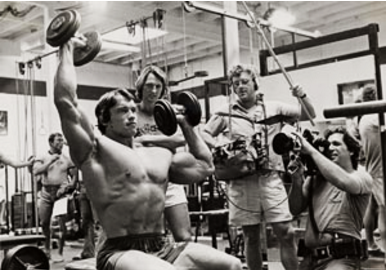
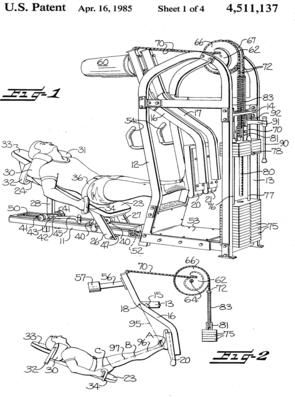

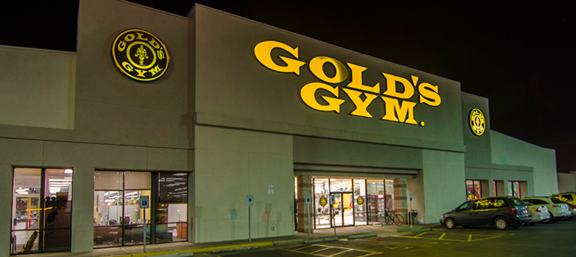
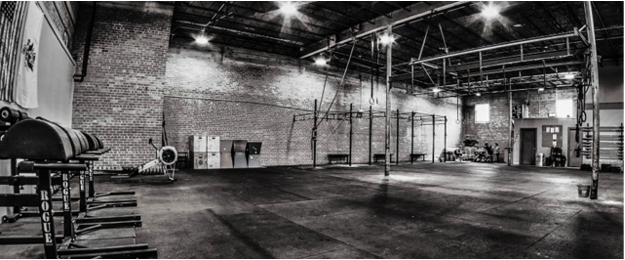
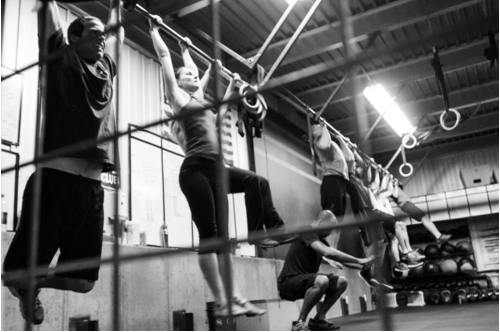
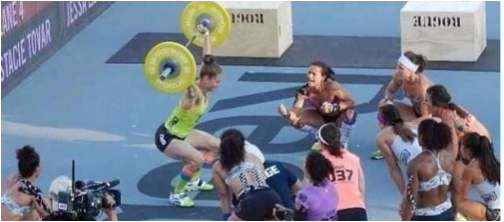
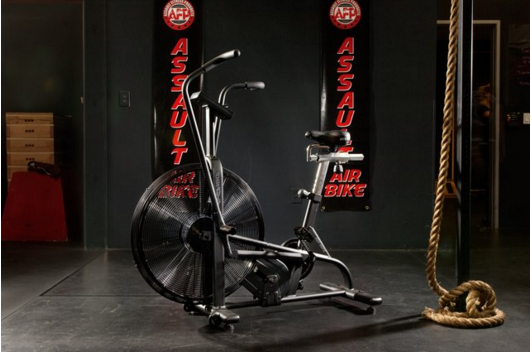
September 3, 2016
I have been waiting my adult life for this article. Thank you so much!
October 4, 2016
This is a deliciously beefy critique of weightlifting and the gymification of the last 80 years or so. It’s the kind of protein shake Engels might drink for breakfast, trying to catch up to Marx’s body mass. There’s a ton of great stuff here on the emergence of Gold’s Gym, Nautilus, and Crossfit – which are historically situated within larger systems of (labor) management and social reproduction.
As an aside, I’m interested in how this argument sits within Ultra’s “lift weights, read Marx” (non-prescriptive) program. If the technologies and strategies for shaping our bodies are bound up in various ways with the reproduction of the class relation, aesthetically or otherwise, how might lifting weights (or just training in general, bodily or mental) be part of a defensible revolutionary practice? Does this not risk posing a kind of reconfiguration thesis on the individual, bodily scale? I don’t (want to) think so, but I’d like to hear more about body-building-for-capital vs. body-building-for-revolution. The critique of progress and self-development is all well and good. How do we move on without erasing this critique (in something like accelerationism) and without pretending that there is some flavor of ‘development’ exempt from the relations of capital, patriarchy, racialization, etc. What might it mean to train in a way that works to abolish the very social mediations that make this training possible, that is, to train *negatively*? How does the inoperativity/play of communist measures mesh with a world whose freedom is always false, where lifting, reified, is always something more than it is? Maybe this is the line between (dialectical) method and (topsy-turvy) object, the shaking quadriceps of the squatter in motion. As Kyle would say: “swerve.”
October 13, 2016
Read less Foucault and lift more weights, “Ralph.”
September 21, 2018
Workers don’t need a gym to build muscle. I am a skilled blue collar worker, have substantial muscle mass, and haven’t been in a gym since high school. At the end of a work day, tired and sore, a gym is the last place I have any interest in visiting. There is a construction site at one of my workplaces, and the tradesmen there are all pretty ripped, because moving block, metal, heavy tools, and other materials all day tends to put on muscle. At the end of their work day, most of these men and the few women get on their Harleys or into their F-250s with “Trump” bumper stickers on them, and go home or to a bar, not the gym.
Being physically healthy and strong is great, but mixing it up with politics is ludicrous. Talking with several of the construction workers also reveals that many if not most of them own firearms. And the fact is that when and if things get REAL, it’s going to come down to that; firearms, since the police seem to have them as well. You can be built like Samson, but against some pencil necked geek with a 9mm pistol, you’re a pile of dead meat.